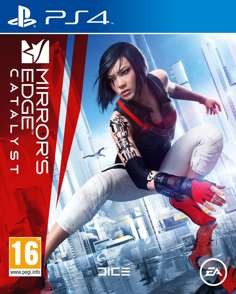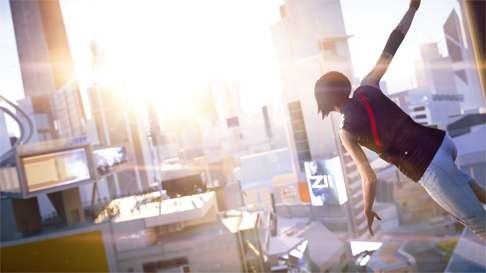
Game review – Mirror’s Edge: Catalyst is a hop, skip and a jump from perfection
Parkour in the city of the future, beautifully captured and rendered, with a truly engaging heroine – Mirror’s Edge is an exhilarating experience

EA Dice
4.5/5 stars
Mirror’s Edge has always been a passion project for Dice, the Stockholm-based developer better known for its bombastic and hugely successful Battlefield series. The original Mirror’s Edge, released in 2007, was a first-person parkour game with a striking visual style, and to this day it divides opinion – some consider it a masterpiece, while others found it trammelled and frustrating. The game was too modest a success to earn a sequel at the time but, just under a decade later, Dice has another chance to get Faith – and her city – running again.
Much of hero Faith’s move-set is functionally unchanged from the original game, though it now looks better than ever, and Catalyst’s appeal is in how the first-person perspective embodies her. Run forwards and you’ll catch glimpses of her hands moving up and down; catch a railing and her arms catch the railing; roll forwards and your view moves through 360 degrees with glimpses of her hunched knees; stand on top of the highest building in the city, look down, and you’ll see her feet. It’s not just the good stuff either – the way her arms flail during a nasty tumble, how she reels back from punches, or the panicked gasping when you’ve misjudged a leap and sent her tumbling into oblivion have all been improved.
Alone these are tricks but together they make Faith feel like a character, as opposed to a floating camera. Her abilities aren’t superhuman either, unless you count exaggerated jumping heights, making her a winning combination of supremely capable and fragile, the classic glass cannon. Faith can climb skyscrapers, swing across rooftops and hurdle anything in her way, but one false step and it’s all over.
Catalyst’s bigger distinction is the city of Glass, an open world that replaces the original’s linear levels. It’s a brilliant change. Not just a device that allows Catalyst’s designers to build missions that ping-pong you across the map, the interconnected rooftops are a perfect fit for the game’s concept. Mirror’s Edge is about running, and this environment lets you run for the sake of it. The city’s aesthetic, round-edged futurism in a primary palette, flows and changes style across the different zones. Construction areas have bright yellow scaffolding around tarps and cranes, while office interiors are all looped furniture and distracting billboards.
The story missions that see you open up the map start well before the challenge begins to increase, and in some ways Catalyst (available for PC, PlayStation 4, and Xbox One) repeats the mistakes of the first game. The combat system is much improved thanks to the “focus” system’s emphasis on speed, which allows Faith to avoid damage as long as she’s built enough momentum, and “traversal takedowns”, i.e. instant knockouts. When face-to-face she has two attacks and a dodge, which can be chained together for various smashing moves.
That I saw the later story missions through is down to Faith’s sheer physical presence, the fact she’s such a joy to inhabit, and that this playground is worthy of it. The campaign is only one part of Catalyst, and the meat is to be found in its assortment of side missions and the clever online mode. The former are dead drops, delivering fragile packages, running diversions, taking on combat missions, or just time trials (which in some ways are the best of the lot).

The online mode lets you create your own rooftop run, by arranging hoops along a route and posting a time for it. These appear in other players’ worlds and can be taken on at any point, whereupon you’ll race against a visualisation of the original runner and have to hit each hoop on the way to the goal. So simple, but a perfect way to introduce a multiplayer element to Mirror’s Edge, and guaranteed to lead to weird and creative runs. This is a game about running and, when it just lets you, it’s exhilarating.
When you’re flat-out sprinting, Catalyst feels wonderful. When standing still, in the Grid Nodes, it’s great too. It’s only in that mid-region, either gaining or losing momentum, that you end up clumsy and infuriated. An unusually tricky jump or a forced combat section can lead to countless restarts and frustration, a terrible 20 minutes of play, and then when you finally break free it’s like hitting fresh air. You run as fast as you can just for the hell of it, exulting in every leap and tumble, almost feeling the wind whip past as you crest this city’s heights.
Almost 10 years on, and there’s still nothing like it. Faith never really needed rebooting. But Mirror’s Edge: Catalyst, warts and all, finally delivers the world she deserves.
The Guardian

